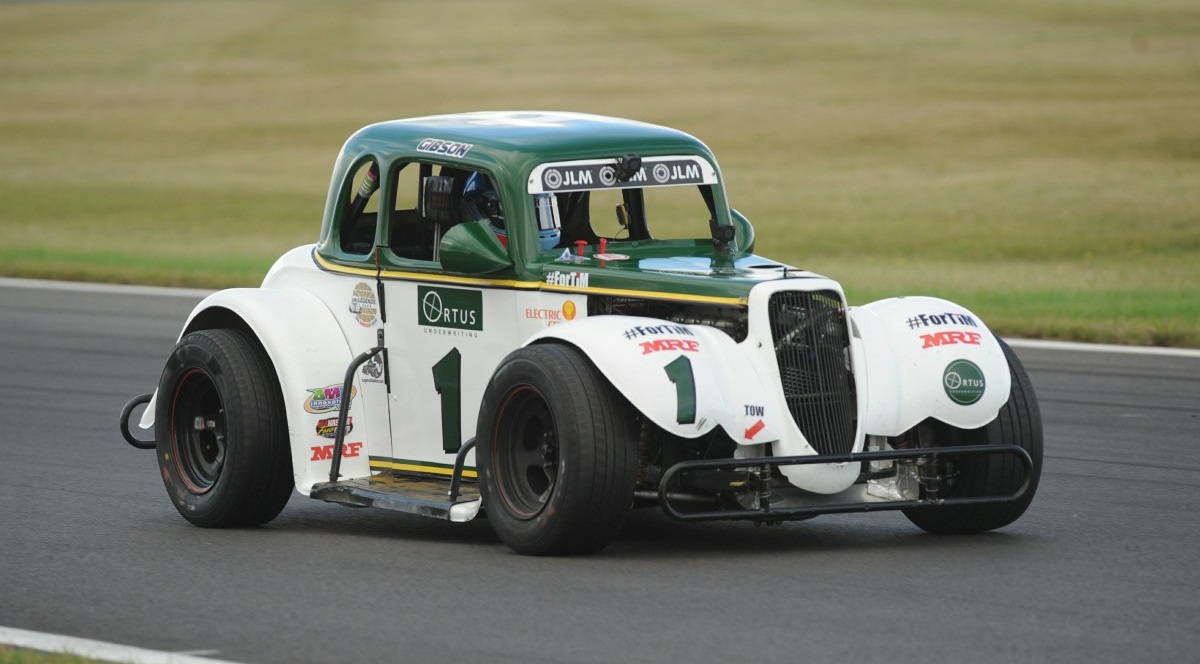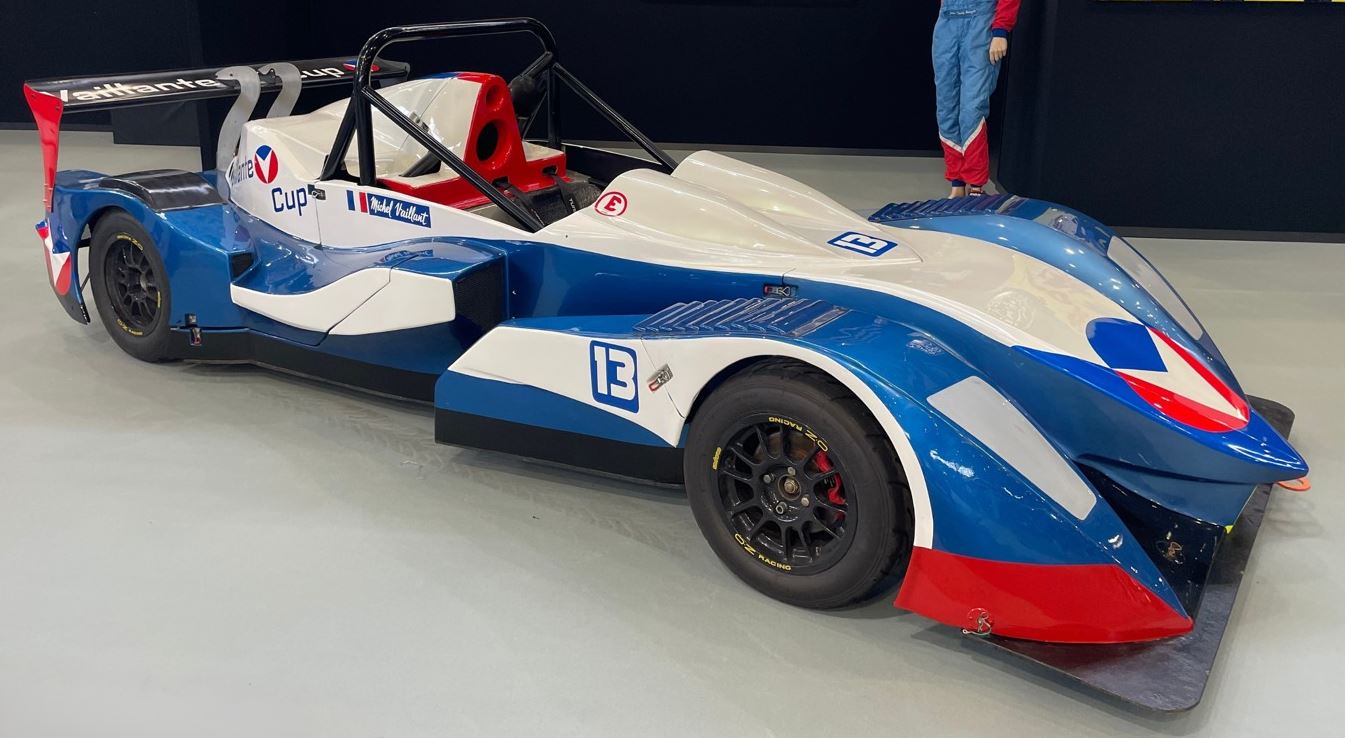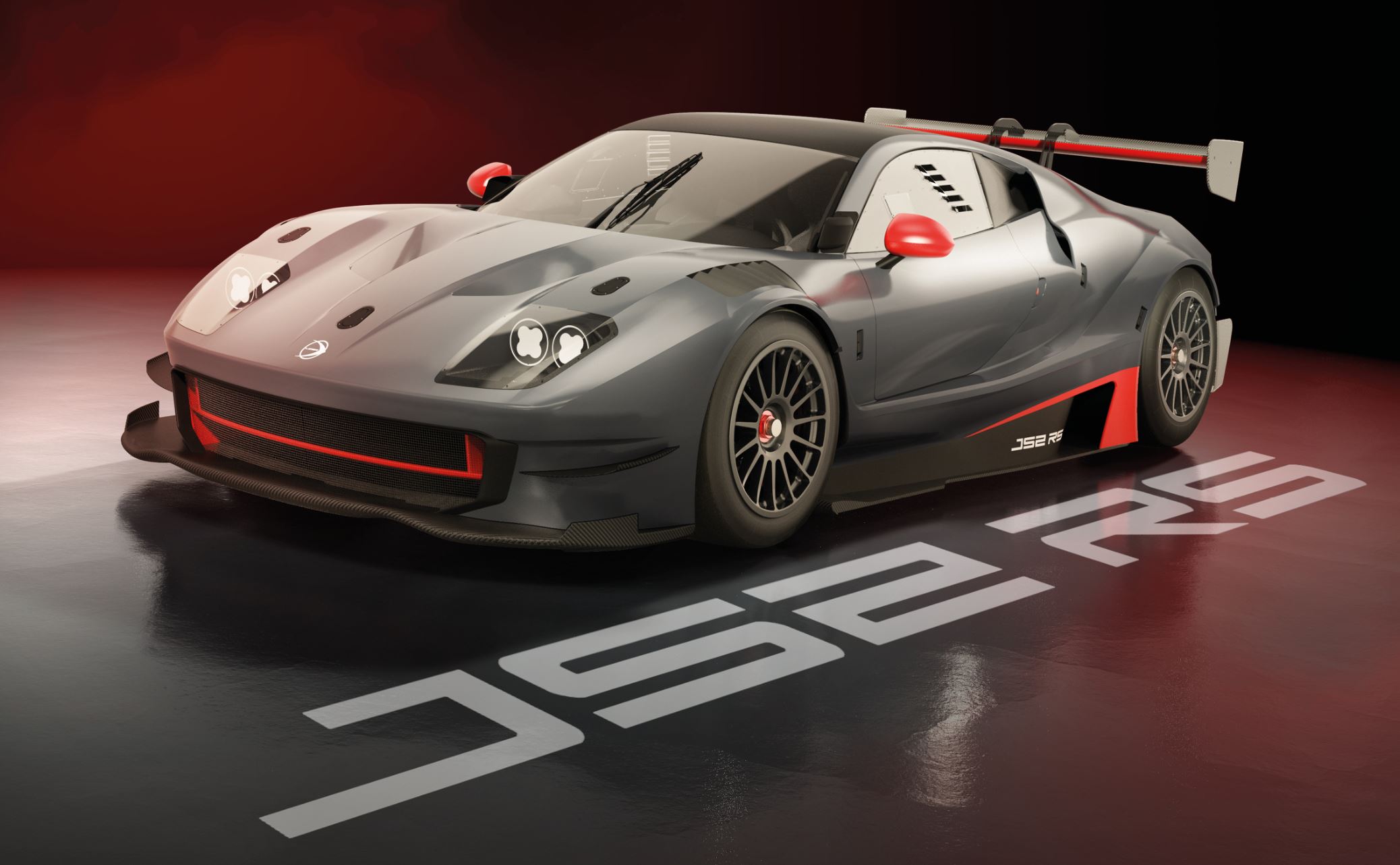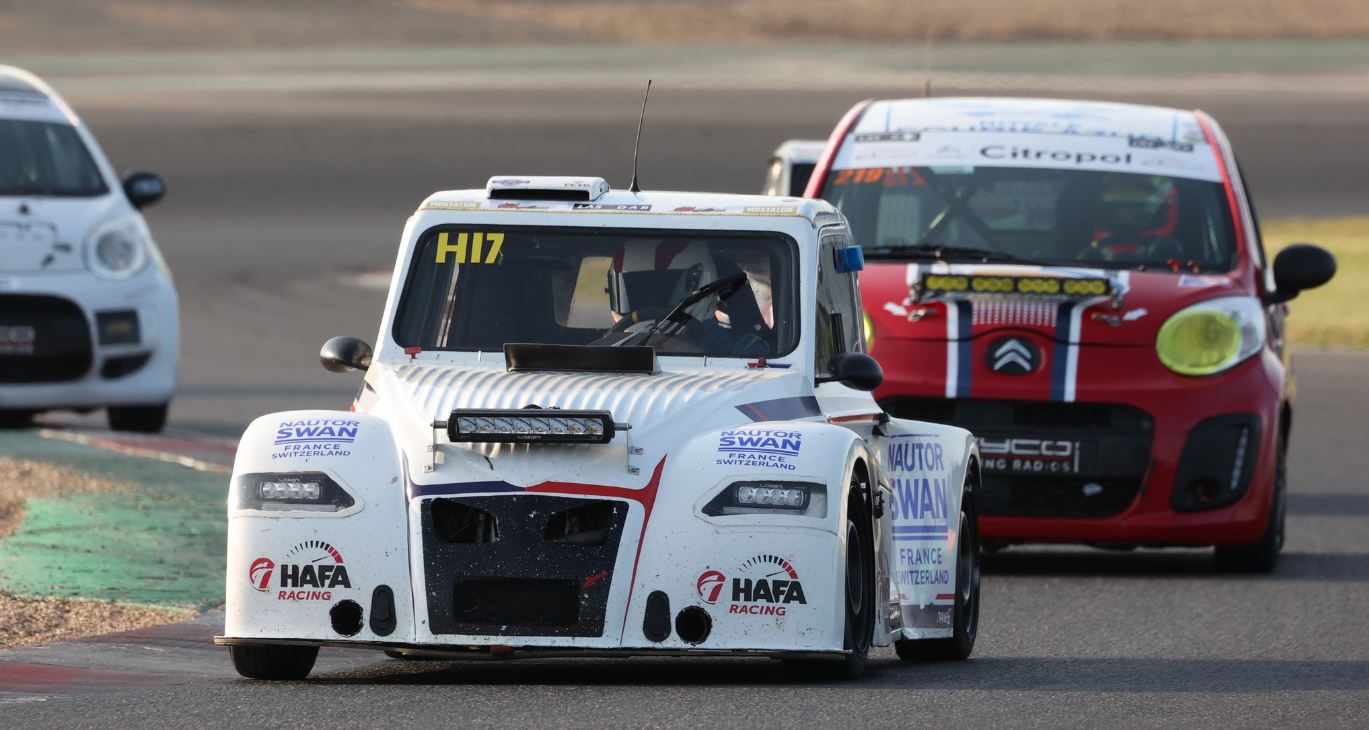Legend Car: the Affordable, Ultra-Fun Hot Rod Racer
By RobinB on 03 June 2025 Circuit / Race Circuit / TrackdayWhether you're a rookie or an experienced driver, discover how these 5/8-scale replicas of American hot rods have offered, for over thirty years, an affordable and friendly gateway into motorsport 🥳
American origins and philosophy of accessibility
Legend Cars were born in the United States in the early 1990s to offer a racing format that was both affordable and spectacular.
The concept was imagined by O. Bruton Smith, owner of Speedway Motorsports, and Humpy Wheeler, then president of the Charlotte Motor Speedway (North Carolina): they wanted a race car that wouldn’t cost more than a brand-new bass boat (a small, approximately five-meter-long sport fishing boat with an outboard engine, very common across the Atlantic) and that could fit in the bed of a pickup truck.
With help from driver-developer Elliott Forbes-Robinson, the first Legend Car was unveiled in April 1992 on the Charlotte oval (see below).
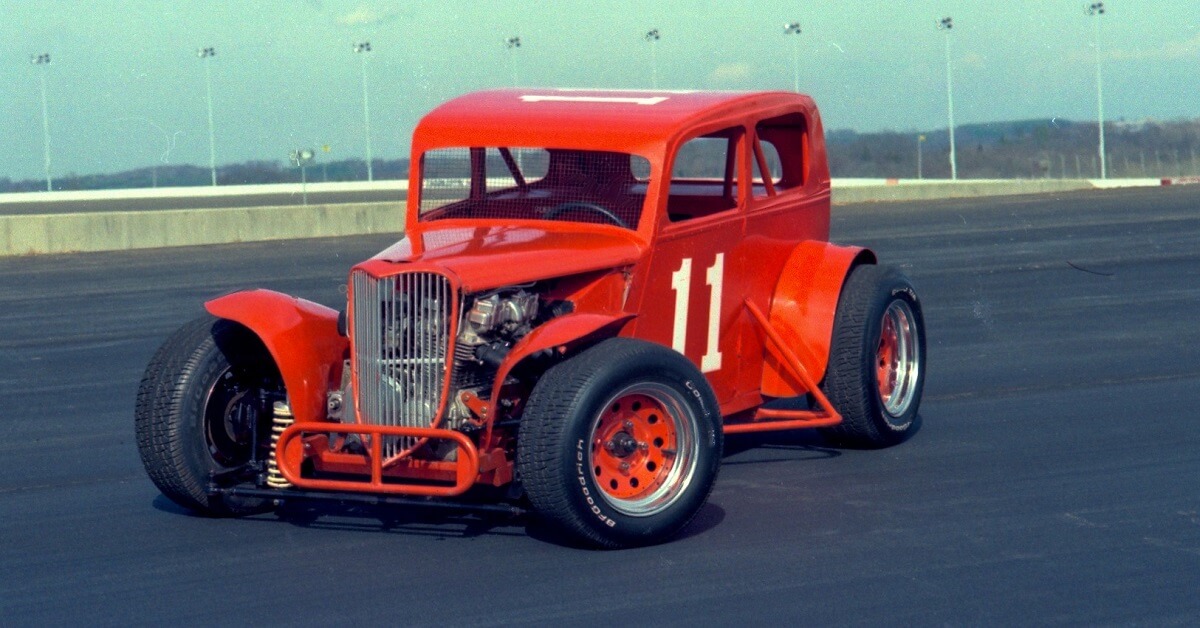
Since then, the series has spread across six continents. Its technical and sporting framework is set by INEX, an American organization created in 1995 and based in Harrisburg, North Carolina. Every year, INEX publishes the INEX Rulebook, trains scrutineers, and distributes safety updates. According to its own figures, this rulebook serves as a common foundation for over 2,000 sanctioned races on around 140 tracks worldwide. However, each country may add slight sporting or administrative adjustments.
Accessibility remains one of the keys to the success of Legend Cars: with significantly lower running costs than most motorsport disciplines, it opens the door to amateur drivers while still attracting seasoned competitors 👌
Also worth reading: "Getting started in circuit racing: the complete guide"
This affordable budget goes hand in hand with on-track entertainment: their compact format encourages wheel-to-wheel battles and close overtakes, to the delight of spectators. Lastly, friendliness remains a strong hallmark of the series: the paddock is known for its welcoming atmosphere, filled with mutual support and sportsmanship among enthusiasts. All these reasons explain why the Legends Cars Cup has built a loyal community of drivers and teams for over thirty years.
Mini racers with a retro look
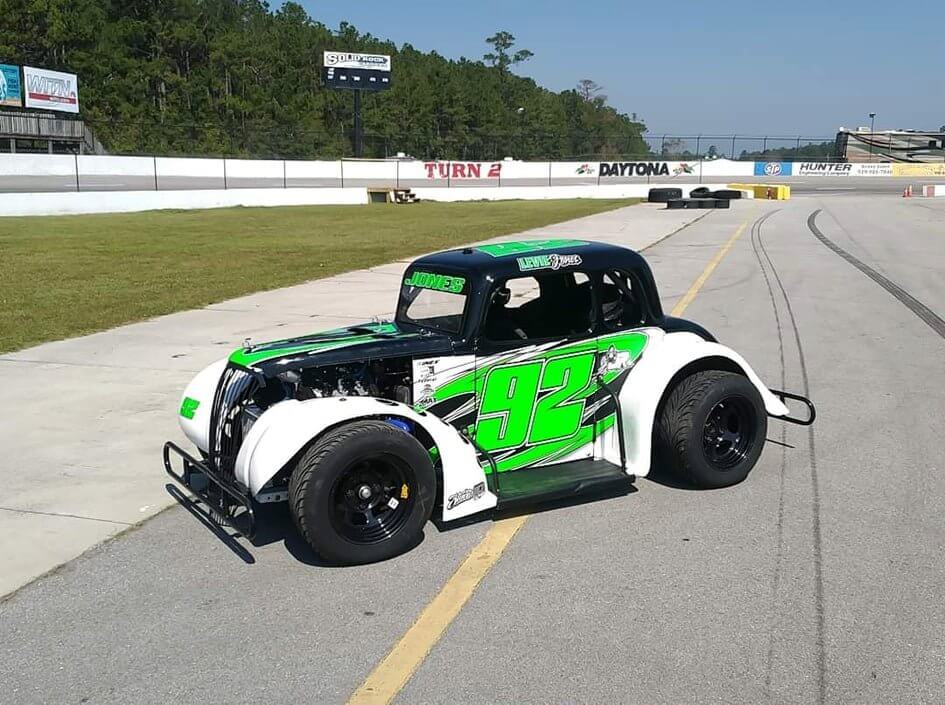
Under a fiberglass body inspired by 1930s hot rods, the Legend Car hides a tubular chassis and modern motorcycle mechanics. Built at 5/8 scale, they come in body styles modeled after pre-war American models: 1934 Ford Coupé and Sedan, 1937 Ford Coupé, 1934–37 Chevrolet Coupé/Sedan, 1937 Dodge Coupé/Sedan, and more rarely, the 1940 Ford Coupé 🥰
Flared fenders, a chrome grille, and oversized painted numbers are instantly recognizable. But don’t be fooled by their vintage look: compact, lightweight and powerful, these “mini-hot rods” perform just as well on road courses as on ovals, on asphalt or dirt.
Technical specs: 480 kg for 140 hp 💥
Beneath the vintage shell, Legend Cars hide very modern motorcycle mechanics. The latest version, MT-09 R-Evolution, uses the Yamaha MT-09 three-cylinder 889 cc engine (~140 hp) mated to a 6-speed sequential gearbox with reverse gear. Capable of revving up to 11,500 rpm, this engine launches the car from 0 to 100 km/h in 3.5 seconds and allows it to reach ≈ 200 km/h (or more in the draft — a very important factor in Legend Car racing 😁).
Built around a tubular chassis and lightweight bodywork, the Legend Car weighs 480 kg dry. The power-to-weight ratio is close to 3.5 kg/hp. A solid rear axle, four disc brakes with Wilwood calipers, and 13″ slick tires — MRF in Europe, Hoosier, Nankang or Federal elsewhere — form a simple, robust, and strictly identical package for everyone, ensuring low costs and tight grids.

To remember: FZ-09 refers to the first 847 cc generation sold in North America; elsewhere it was already called MT-09. Since 2025, the 889 cc “R-Evolution” version is the reference for the Elite categories, while the 847 cc CP3 remains in the Racer class, and the old XJR is used in the Light class.
ℹ️ The transition from the four-cylinder XJR to the CP3 three-cylinder happened in two stages: introduction of the 847 cc in 2018–2019, then displacement increase to 889 cc tested in 2024 and officially adopted in 2025. Three engines now coexist, all capped at ~140 hp by a sealed ECU — a guarantee of parity despite two generations of difference ⚖️
Performance and handling: a supercharged mini-kart
Behind the wheel, a Legend Car drives like a big kart: its solid rear axle without a differential forces the driver to rotate the car through weight transfer. On corner entry, you lift off the throttle to help rotate the rear; on throttle application, you have to be precise, or risk understeering or spinning the wheels. Skilled drivers use this slight controlled slide to guide the car to the apex — exactly like you would in a kart 😋

Thanks to its low weight and very rigid chassis, the Legend remains predictable; oversteer comes gradually and is easy to catch. The direct steering provides precise feedback, and the complete absence of electronic aids gives full control to the driver. Narrow tires, short wheelbase: the car feels sharp but gives you warning before losing grip — as long as you maintain smooth inputs. This “old-school” behavior makes it an excellent driving school: it’s all about technique, with no electronic compensation 🤗
Onboard camera in a Legend Car – Epic on-track battle 💪
Price of a new Legend Car: base kit and essential options
Buying a new Legend Car remains surprisingly “affordable.” The car is delivered as a ready-to-assemble kit, but assembly must be carried out by a team already competing in the Legends Cars Cup. This rule ensures that every car meets the exact assembly tolerances and balance of performance set by the organizer.
In 2025, the standard “France” version (Ford Coupé 34 bodywork) is listed at €27,000 ex. VAT: this includes the tubular chassis, MT-09 889 cc engine, and 6-speed gearbox. For comparison, a new Legend costs around $17,500 (≈ €16,000) in the U.S., before shipping and taxes, as the factory is located in North Carolina.
To get a fully equipped and top-spec car, expect to spend ≈ €33,996 ex. VAT. Here are the 2025 catalog prices:
With all these options and assembly included, a “race-ready” Legend costs around €39,000 ex. VAT (≈ €46,800 incl. VAT). Even so, it remains one of the most competitive brand-new race cars on the market, precisely because the standardized assembly by championship teams keeps running costs and technical parity exceptionally well under control.
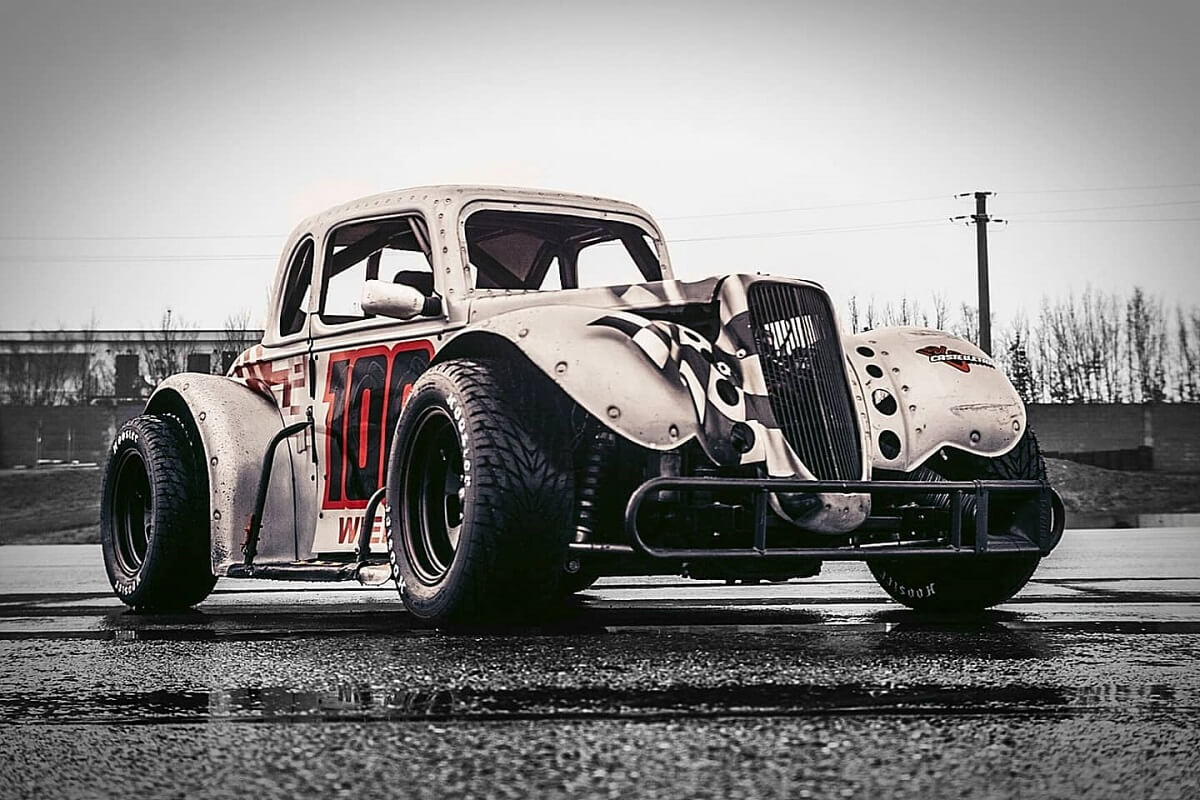
Used market: affordable cars… and still competitive
Many drivers get started in Legend Cars thanks to the used market, which has become particularly active since the arrival of the new engines. You can find models equipped with the XJR 1300 engine — perfect for leisure or racing in the Light Series, the category dedicated to them — starting at just €10,000 to €15,000.
More recent versions, powered by FZ-09 or MT-09 engines, serviced and ready to race, are generally priced between €17,000 and €25,000 ex. VAT, depending on the year, service history, and options.
➡️ See all Legend Car listings on GoToTheGrid 😉
This strong secondhand market is due to the robustness of the tubular chassis and the longevity of Yamaha engines, which can run for several seasons without costly rebuilds. Many upgrades — such as fitting an MT-09 engine or a shifter — can be easily installed on an older chassis, increasing the resale value of a used car.
In practice, with a budget of €15,000 to €20,000, it’s already possible to find a competitive car to start racing — a price-to-fun ratio that few motorsport categories can match !
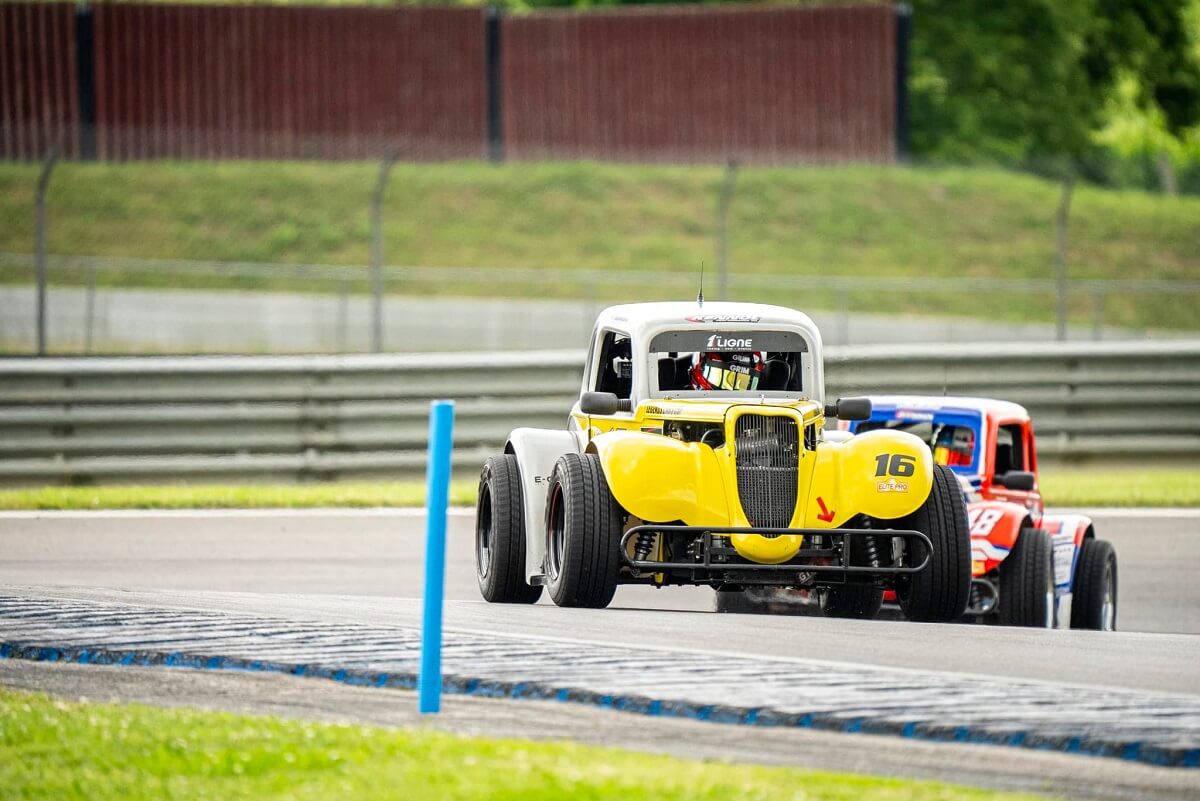
Legend Car rental and “turnkey” packages
Don’t feel like buying? Teams competing in the championship often offer “arrive & drive” packages for individual races, weekends, or full seasons. In France, a full race weekend costs between €5,000 and €6,000 ex. VAT: car, transport, mechanics, tires, fuel, and entry fees included. You just bring your racing license and personal gear — the team handles the rest.
Several teams specialize in this service: MKTE, Plantier Racing Team, Atelier Vendée Performance, and the 1ere LIGNE team on the French side; Alliance Passion Racing in Belgium. In most cases, sharing the seat is possible — which brings the cost down to around €3,000 ex. VAT per driver when split between two.
Price summary
*Ex. VAT: add 20% VAT.
This table summarizes the budget ranges to get started in the Legends Cars Cup. Compared to formats like the Mitjet 2L, the Clio Cup Series, or others, the price-to-fun ratio is hard to beat.
Also worth reading: "Mitjet: brand, cars, championships"
2025 Calendar (FRANCE): seven national rounds
The final round at Le Castellet will also host the European Final, alongside the Truck GP, just like Albi did last year. This calendar features a mix of hilly (Charade), fast (Paul Ricard), and club circuits, offering a great showcase for the discipline, often included in major race events.
Four categories, one grid
All cars start together, but points are scored by division: so each driver battles with others of a similar level, while enjoying a large common grid. The 2024 season was a perfect example: at the Magny-Cours circuit, Thibaut Chiron won the Elite Pro title, while Pierre-Lauryl Broussaud triumphed in Elite. In the XJR class, Sébastien Huaux claimed the Light Series. This multi-level ranking allows everyone to aim for a trophy — whether they are seasoned champions or newcomers.
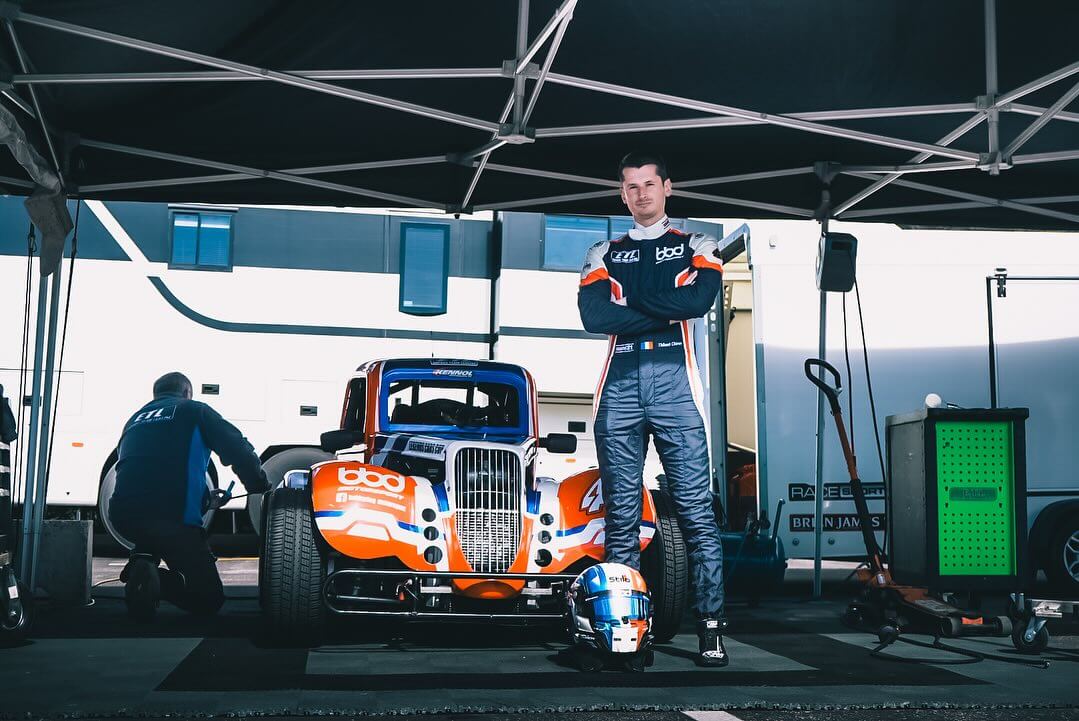
Race format: four sprints and plenty of track time 👍
A Legends Cars Cup weekend spans three days. On Friday, two private 30-minute sessions help teams get their bearings. On Saturday morning, a 15-minute qualifying session sets the grid for Race 1, held in the afternoon. A second session on Sunday morning determines the starting order for Race 2. Races 3 and 4 then line up based on the finishing order of Races 1 and 2. Each race lasts 20 minutes: two sprints on Saturday, two more on Sunday, which means four starts and four podiums.
It’s possible to share the same car: each driver sets their own qualifying time and competes in two races. Points scored in the Elite Pro, Elite, Racer Pro, and Light Series divisions are accumulated throughout the season to determine the champions.
For the championship standings, everyone gets two results. If you race solo, your average from Races 1 & 3 and 2 & 4 is calculated. If you share the seat, each driver keeps their points from their two races. This system puts solo drivers and A/B lineups on equal footing — the only difference being that if a shared car retires, the second driver doesn’t have a “joker race” to compensate.
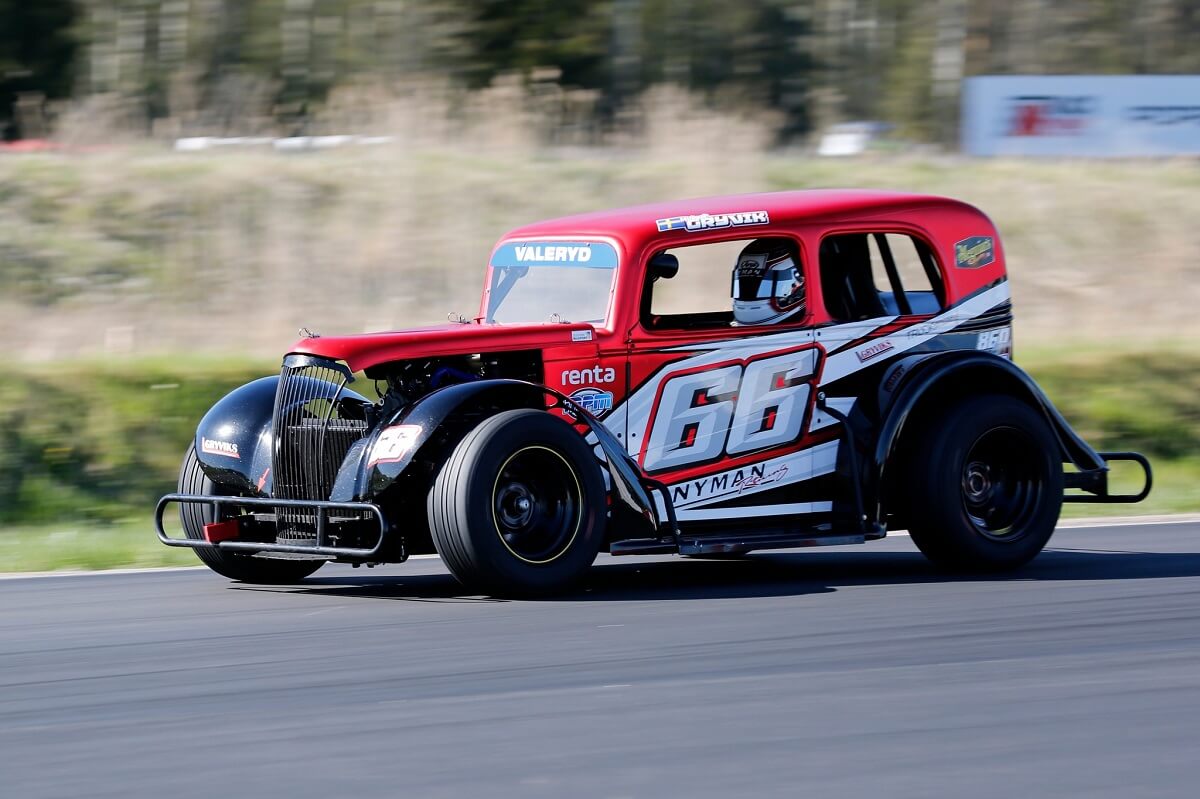
Entry fees: how much should you budget?
To start a Legends Cars Cup round, drivers must first pay the entry fees: €1,950 ex. VAT per event for MT-09 or FZ-09 powered cars (Elite and Racer categories) and €1,350 ex. VAT for XJR 1251 cc powered cars in the Light Series.
It becomes much more affordable when registering for the full season: for MT/FZ-09 cars, the rate drops to €1,650 ex. VAT per round, or €11,550 ex. VAT for seven events. For XJR cars, it’s €1,150 ex. VAT per round, or €8,050 ex. VAT for the full year. These discounted rates are only valid if payment is made before April 15, 2025 — a financial incentive to commit to the full championship.
In addition to these fixed costs, you'll need an FFSA license (national "Competitor-Driver" or international C) and to cover operating expenses: tires, fuel, travel, and small parts. Since tire usage is limited by regulations and sets can last several rounds, the tire budget stays reasonable.
Paddock atmosphere and Legends community
Beyond the racing, the Legends Cars Cup cultivates a unique and friendly atmosphere in the paddock. Each event brings together a true community of vintage car and motorsport enthusiasts. Themed evenings are regularly organized after races, giving drivers, mechanics, and families a chance to unwind in a relaxed and festive atmosphere. These shared moments reinforce the camaraderie within the series — where rivals on track often become friends over an evening barbecue 🎉
For partners and guests, the organization sets up a VIP lounge area with open bar and buffet. Picture a marquee set up in the paddock with cozy sofas, live race feeds on a big screen, and a perfect view of the straight: sponsors can welcome their guests in a premium setting. This VIP hospitality setup adds a professional touch and allows drivers to offer a great experience to their partners while keeping the family spirit of Legends alive.
The public isn’t left out either: paddock access is often free, allowing fans to get up close to the cars and chat with drivers. This proximity helps build strong spectator engagement. In short, every Legends Cars Cup round is as much about the off-track experience as the racing: intense battles by day, great vibes by night — a winning sport/fun combo.
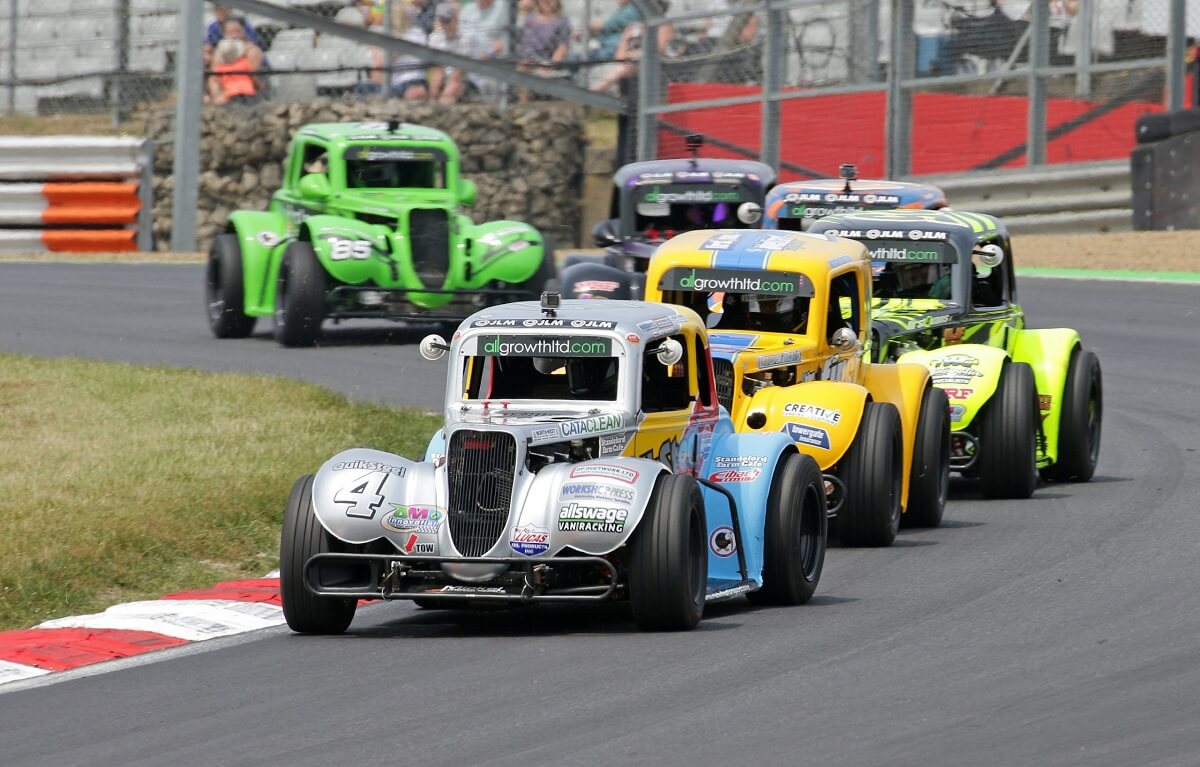
Popular with drivers and influencers alike
Beyond the gentleman drivers, the Legends Cars Cup also attracts well-known faces:
- Alban Lenoir – the actor from “Lost Bullet” turned his first laps at Charade in 2025.
- Romain Monti – pro driver and YouTuber; podium finish on his first outing at the 2024 European Final.
- Étienne “Moustache” Jouneau – 1M+ followers, entered at Dijon 2025 sharing the wheel with young Keanu Lieutaud.
- Erwan “The Gloved Driver” – immersive test drive during the 2025 Lédenon round.
The lineup ranges from content creators to former champions (skier Kristian Ghedina even joined in Italy). Their videos and stories boost the series' visibility and prove that in Legend Cars, fun is universal.
A global success story
Born in the U.S., Legend Cars have since conquered six continents, over 150 circuits, and more than 30 countries. In early April 2025, U.S. Legend Cars International in Harrisburg, North Carolina celebrated the production of chassis LC008000, bringing the total to 8,000 Legend Cars built since 1992. Everywhere, you’ll find the same tubular chassis, 5/8-scale hot rod body, and standardized INEX regulations — enabling drivers to race seamlessly from Texas to Tuscany or from Sydney to Silverstone.
United States: the birthplace
In the U.S., the series features massive regional grids, alternating between asphalt and dirt-track, and serves as a feeder to NASCAR. The Charlotte Summer Shootout gathers top young talents each summer starting from age 10, while the World Finals in autumn crown the global Legends champions.
Canada: the northern neighbor
From Ontario to Quebec, Legend Cars became part of Canadian paddocks in the late 1990s. The “INEX Canada” championship now fields about thirty cars on tracks like Shannonville, Mosport, and Autodrome Chaudière, mixing paved ovals and road courses. Each summer, several teams cross the border to race at Charlotte’s Summer Shootout, and vice versa — American drivers come to enjoy Canada’s hilly circuits. Thanks to logistical proximity and shared INEX rules, true cross-border competition flourishes, strengthening the North American presence of the Legend Car.
Europe: a land of diversity
The UK is Europe’s stronghold: the championship runs as a BTCC support series and has turned bump-drafting into a way of life on Croft and Donington’s long straights. Italy fields 30+ cars per round, even racing on snow in the Alps. Finland adopted the format in 1999 and made it its top series: 40+ starters, summer and winter, with many world titles. France, Belgium, Sweden, Denmark, Czech Republic, and Georgia (Caucasus) round out the list — proof that Legend Cars meet the same demand everywhere: race a lot, on a tight budget.
Australia: recent boom
Arriving on the “island continent” over 20 years ago, Legend Cars had never seen such popularity as in 2025. 160 cars are now registered, with about 40 expected per asphalt round in the Hi-Tec Oils Super Series. Legend Cars Australia boss Tony Ward estimates annual running costs at 15,000 to 20,000 AUD (≈ €9,000–12,000), all-inclusive — with hard-compound tires at $150 apiece that last an entire season. The result? Grids running six or seven cars wide down The Bend’s main straight!
A rotating continental finale
Since 2019, the European Nations Cup has capped off the season by gathering top drivers from each country. The 2024 edition at Albi hosted 29 Legend Cars from across the continent; the next will be held at another iconic venue — proof the series is still growing.
Boosted by viral videos of these “mini-NASCARs” and ever-reasonable budgets, the formula continues to win over new championships; there are even projects in the works for Asia and a South American revival. Three decades after its creation, Legend Cars prove that driving fun, technical parity, and controlled costs truly speak a universal language.
“Bump-drafting”: the art of pushing your rival
Before we wrap up, let’s talk about a specific technique often seen in Legend Car racing: bump-drafting. Borrowed from NASCAR, bump-drafting is when two cars line up on a straight, with the rear car gently pushing the one ahead using its front bumper, allowing both to go faster together than alone. By reducing air resistance between them, they gain aerodynamic efficiency and top speed — which can be a game-changer on long straights 💨
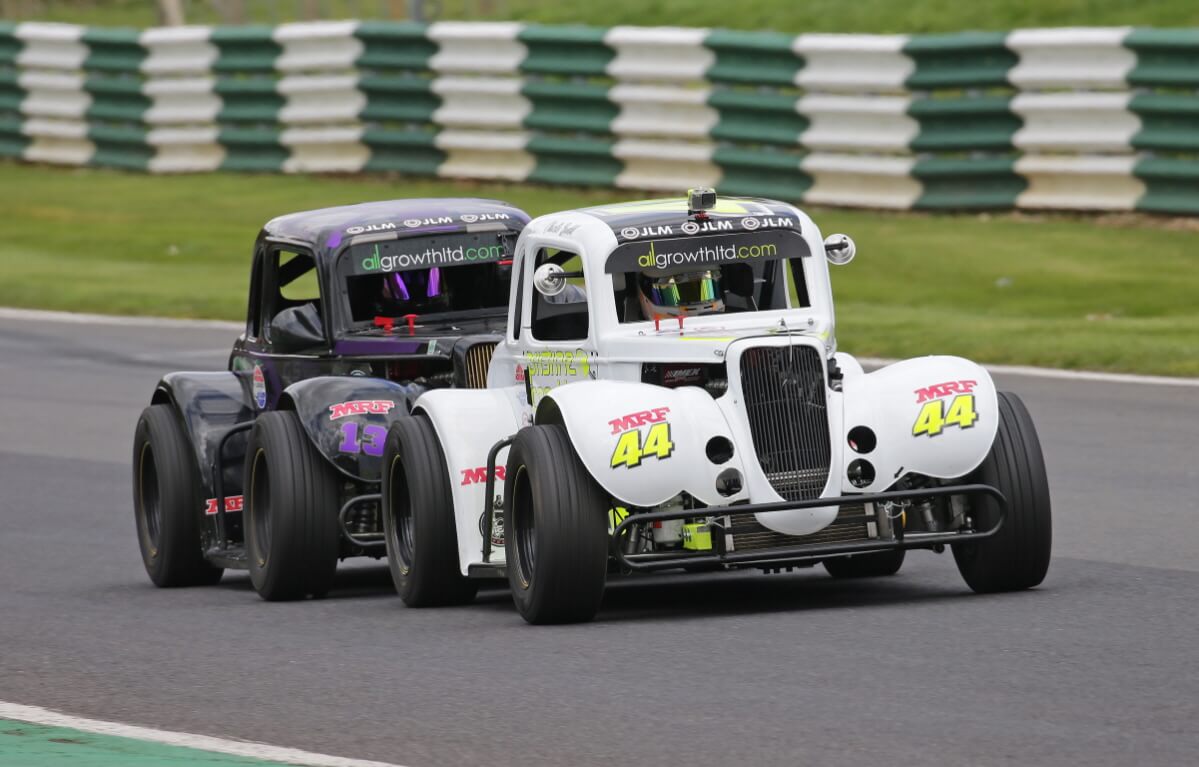
Why does this work particularly well in Legend Cars? First, these cars have fairly poor aerodynamics (boxy, 1930s-style shapes), so slipstreaming plays a huge role. Alone in the wind, the small engine struggles to reach top speed — but tucked behind another, you easily gain a few km/h. Second, the sturdy structure with metal bumpers front and rear allows light contact without damage. Legend Cars are designed with tubular bumpers that line up perfectly: a gentle nudge straight-on won’t upset the balance. Of course, good coordination between drivers is essential to avoid incidents 😅
On American ovals, bump-drafting has become common in the Legends category: drivers often form two- or three-car trains to catch breakaways or drop the pack. Even in Europe, it’s seen on fast straights. It may seem counterintuitive for an amateur series, but it’s allowed as long as it’s light and under control. Bump-drafting is especially handy when setting up a pass: push your buddy forward so he tows you, then pull out on the final lap to try your move. Done right, it’s win-win — until the last-lap showdown.
Naturally, the rules regulate this for safety: hard intentional hits are penalized. But in the Legends spirit, a friendly bumper tap is part of the game — and the show. This technique adds a strategic layer to races, especially on ovals: forming the fastest train becomes key 🚨
Conclusion: Legend Car, small format — big thrills
By blending vintage charm with modern mechanicals, the Legend Car has pulled off a unique feat in motorsport. Financially accessible, friendly, and educational, it attracts both weekend warriors and seasoned drivers. Whether in France or abroad, these small Hot Rod-style cars deliver maximum thrills at minimum cost — reconnecting with the original spirit of grassroots racing 👍🔥
Whether you’re a young driver looking to gain experience, a motorsport enthusiast wanting to get behind the wheel, or simply a fan of classic American muscle, the Legends Cars Cup has something for you. Its success shows no signs of slowing down, with packed grids, thrilling races, and a tight-knit community. As those who’ve tried it say: “100% of drivers who try Legend Cars come out grinning ear to ear.”
Now it’s your turn to join the legend: start your engines! 🏁

